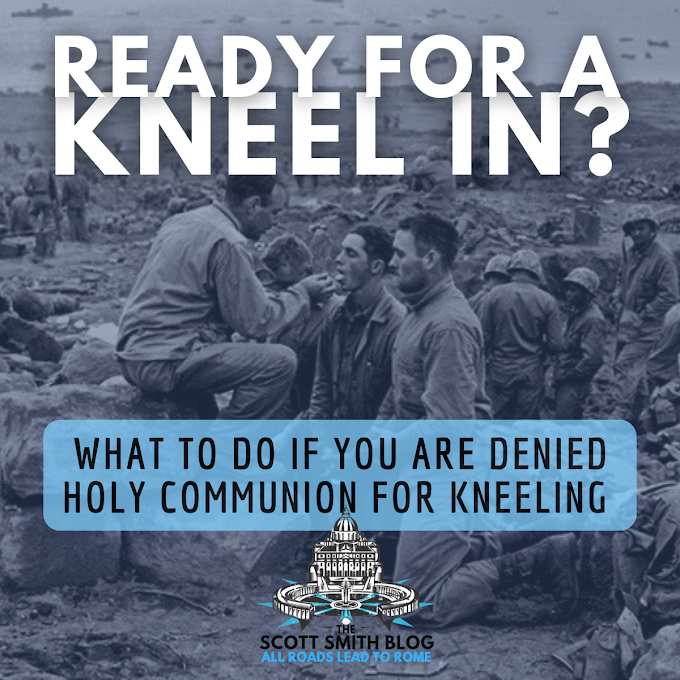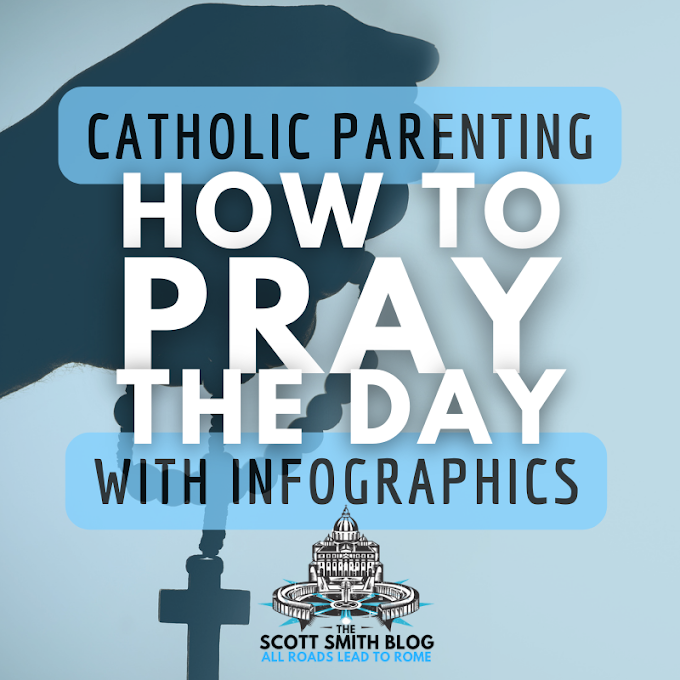In this post you will learn
I've heard from multiple priests that they have been noticing a sizable uptick in Confessions. This has been particularly noticeable this past Lent and Advent.
I just heard from priest-friend of mine from deep in the heart of the California badlands. He heard almost 400 confessions between Palm Sunday and Easter Sunday. He estimates a total of nearly 2,000 confessions between all the priests of his parish.
Wow. Talk about Signs of Life!
My (anonymous) priest-friend is letting me share his homily from Easter Sunday with you. He also referenced my articles on Lord of the Rings and the Bible, particularly Gandalf and the Resurrection. Enjoy!
From an Easter Sunday homily, April 9, 2023
Last night at the Easter Vigil Mass, to my pleasant surprise, my father, who’s not Catholic by the way, appeared at the Mass (he is risen!). By the time I went to bed, it was past 1am. I only slept about 3 hours because I had to wake up very early to concelebrate with our pastor at the 5am Easter Sunday Mass. The Easter Vigil Mass was such a glorious event that it left resounding in my heart the beautiful refrain of: “The Lord is Risen!”
After Mass, I went to help with the 6:30am Confessions, naively convinced that the line would be significantly shorter due to having heard a Holy Week’s worth of Confessions[1]—the line was short, initially. But my heart’s resounding refrain, “The Lord is Risen!” would soon turn into “Lord have Mercy!” due to the massively long line. With the exception of one bathroom break, I was in the box, virtually, from 6:30am until my 10am Mass.
Long lines or not, “The Lord is Risen!” This is the war cry for our current Eucharistic Revival, but ...
We cannot have a Eucharistic Revival without a Confession Revival ...
Literature can help us to better understand the risen Lord
In J.R.R. Tolkien’s trilogy novel The Lord of the Rings, there’s a scene where one of the members of the Fellowship of the Ring, Gandalf the Grey, tries to protect everyone from the frightening demonic-looking beast called the Balrog.
The Fellowship runs away. Eventually they reach the narrow bridge of Khazad-dum and then a showdown goes down between Gandalf and the Balrog. Gandalf stops, turns around to confront the Balrog, and says, “Go back to the shadow.” The Balrog, with a massive flaming sword, strikes at Gandalf but to no avail.
Gandalf in a loud voice then says, “You shall not pass.”
As the Balrog attempts to strike again, the bridge collapses, along with the Balrog. Thinking the battle has been won, Gandalf walks away but then suddenly the Balrog’s fiery whip grabs Gandalf’s heel and attempts to pull him down. Gandalf loses his footing and hangs for dear life at the edge of the bridge.
Gandalf and Genesis 3:15, the Protoevangelium
That Gandalf’s heel was struck is highly significant. This refers to that event in Genesis 3:15 in which God said to the ancient Serpent, Satan, “I will put enmity between you and the woman, and between your seed and her seed; he shall bruise your head.” (Genesis 3:15 RSV).
Notice the masculine pronoun “he.” “He” refers to the Holy One, Jesus Christ, whose heel will forever (the final forever being Jesus’ Second Coming) bruise, that is, crush the head of the ancient Serpent.
Gandalf the Grey, like a sacrificial lamb, freely lets himself fall into the abyss in order to protect the Fellowship.
Gandalf the Grey dies and rises unto his newfound identity as Gandalf the White.
Eventually the Fellowship encounters a mysterious man dressed in white whose clothes radiate an unearthly, brilliant white light. The sheer brightness and whiteness of the light so blinds the eyes of Aragorn, Legolas the Elf, and Gimli the Dwarf, that they can’t see who this mysterious man is—it is Gandalf.
Gandalf symbolizes the Risen Christ.
Catholic theologian Scott Smith explains all these connections between Gandalf's Resurrection and the Resurrection of Jesus:
- Gandalf casts down the power of evil, just as Christ defeated Satan’s power over death on the Cross
- Gandalf is a sacrificial lamb, just as Christ is the Lamb of God
- Gandalf wields a sword, just as Christ wields the Sword of the Spirit
- Gandalf and Christ both begin their descent into the depths from a Cross
- Gandalf’s victory over evil results in his death, just like Christ
- Gandalf descends into the abyss, just as Christ descended into hell
- Gandalf descends to “hell” first through fire and then through cold, similar to Dante’s depiction
- The days of Gandalf’s descent and ascent are numbered like Christ’s descent into hell, 10 versus 3
- Both Gandalf and Christ have an Ascension
- Both Gandalf and Christ’s friends don’t recognize him after the Resurrection
- Both Gandalf and Christ are adorned in blinding white clothes
Science can also help us to better understand the risen Christ: the Shroud of Turin
If you do the ultraviolet radio radiation hypothesis, it would be six to eight billion Watts. That’s like . . . half a million, 500, 000 searchlights worth of light energy, proceeding from every point in that body for 140 billionth of a second . . . . in order to get a 140 billionth pulse, you’d have to use an ARF Excimer Laser and if you use that laser it would have to exceed all the ultraviolet laser radiation capacity we have in every laboratory of the world today and it still could not produce that image. That’s how powerful that image is.
Man:
Woman:
Holy Eucharist & The Glorified Body
- Impassibility – Immune to all suffering, pain, tears, and death.
- Subtlety – Spiritualized body.
- Agility – The capacity to move with great facility and rapidity.
- Clarity – The body will literally shine with beauty and radiance, and this “brightness” will be brighter the greater the degree of sanctifying grace in a soul at death. St. Teresa of Avila who saw glorified bodies says, “If I had spent many years trying to depict how to imagine something so beautiful I couldn’t have, nor would I have known how to: it surpasses everything imaginable on earth, even in just its whiteness and splendor.” [10]
The reason I want to go to heaven is because I want to be with love. There’ll be many surprises there. People we never expected to see and a number of people absent whom we thought would be there. Finally, there will be one great surprise, the greatest of all—that you and I are there. I will see you in heaven![11]
Footnotes: Long Confession Lines, Gandalf & the Resurrection
[1] I counted the # of penitents whose Confessions I heard from Palm Sunday to Easter Sunday: 381 fish in total. If you do the math, using this # as a general total average per priest and multiplying it times 5 priests in total who heard Confessions all throughout Holy Week, then the total # of penitents during Holy Week comes out to be 1,905. That’s a lot of fish that swam through our Confessionals during Holy Week.
[2] Augustine Institute – Catholic Church Explained. “The TRUTH About the Shroud of Turin w/Fr. Robert Spitzer | Chris Stefanick Show.” Apr 5, 2023 (~18:32 – 19:40)
[3] cf. https://www.crisismagazine.com/opinion/theology-of-the-body-vs-body-mutilations
[4] https://www.drjoemalone.com/meet-dr-joe
[5] Pope Benedict XVI, Encyclical Letter Caritas in Veritate (2009), no. 48. Quoted in “Doctrinal Note on the Moral Limits to Technological Manipulation of the Human Body,” Pages 1-2.
[6] cf. Baltimore Catechism, Lesson 26, no. 343. “Q&A On the Eucharist”
[7] St. Augustine, City of God (Waxkeep Publishing, 03-30-2013), ch. 22, pg. 752.
[8] St. Thomas Aquinas, Summa Theologiae (ST), Supplement, q. 81, a. 1. Dr. Kevin Vost observes, “As a hopefully interesting aside, I decided to do a little Internet search for the phrase ‘peak age for athletic performance.’ Results on the first page included mention of the fact that though there are differences of a few years here and there depending on the sport, both endurance (as evidenced by the performance of marathon runners) and measured muscle mass peak at around age thirty!” See Ross Pomeroy, “This is When Athletes Hit Their Peak,” Real Clear Science, June 24, 2015, and John A. Batsis and Silvio Buscemi, “Sarcopenia, Sarcopenic Obesity and Insulin Resistance,” in Medical Complications of Type 2 Diabetes, ed. Colleen Croniger (Rijeka, Croatia: InTech, 2011), 236.
The above quoted in: Kevin Vost, Psy. D., Aquinas on the Four Last Things: Everything You Need to Know About Death, Judgment, Heaven, and Hell (Manchester, New Hampshire: Sophia Institute Press, 2020), Ch. 17: What Our Bodies Will Be Like at the Resurrection: How old will we be when we arise?, Footnote 64. Dr. Vost also says the following:
Thomas elaborates that we will arise without any defects, and human nature, as it is now, possesses a ‘twofold defect.’ Children possess a defect in that they have not yet attained their ultimate physical perfection, and the aged possess a defect in that they have declined from their ultimate perfection. Therefore, the perfected body of the resurrection will be of a youthful condition of ultimate perfection, the point at which growth has ended and decline has not yet occurred. Thomas notes as well that the aged are rightly revered, not on account of their bodies, but on account of the soul’s wisdom. Therefore, even when resurrected in youthful bodies, those who attained old age will still be revered ‘on account of the fulness of Divine wisdom which will be in them, but the defect of old age will not be in them.’ As for children, while their bodies do possess the greatest powers of growth, they have not yet attained the ultimate perfection found in youthful maturity, which is the age at which all will arise.
[9] Msgr. Stuart Swetland, “What Is A Glorified Body?” cf. Stacy Trasancos, “What Was Christ’s Resurrected Body Made Of?” 04/29/2019
[10] St. Teresa of Avila, The Autobiography of St. Teresa of Avila: The Life of Teresa of Jesus, trans. E. Allison Peers (Garden City: Image Books, 1960), 260, Chapter 28.
[11] Fulton Sheen, Your Life Is Worth Living: 50 Lessons to Deepen Your Faith, Foreword by Bishop Robert Barron (New York: Image, 2019), Lesson 46: HEAVEN IS NOT SO FAR AWAY.


















7 Comments
And comparing Jesus Resurrection with a PAGAN character from a PAGAN film???
Comparing Jesus Resurrection with 'science' ultraviolet radiation whatever?
This is even BLASPHEMY!!!
You are so far off the tight path it's incredible.
You know what your behaviour tells me? That unfortunately you don't know anything about pagan doctrines, practices and traditions, even less about talmudic luciferian cabalism of judaism/pharisaism.
I highly recommend you to at least read and study the Vatican document "Jesus Christ: The Bearer of the Water of Life", an excellent exposure of the New Age pagan agenda.
Be careful because you're misleading innocent catholics, and on the day of your personal judgement, you'll be accountable for that.
God bless you!!!
https://www.azartoff1.com/ru/lobby/coins/ — интересная подборка игр с монетной тематикой, интерфейс выполнен аккуратно и всё работает плавно. Пробовал пару раундов — были небольшие выигрыши, но крупного ещё не случалось. Хотелось бы узнать, как у других с кэшбэками и выплатами именно в этом разделе?